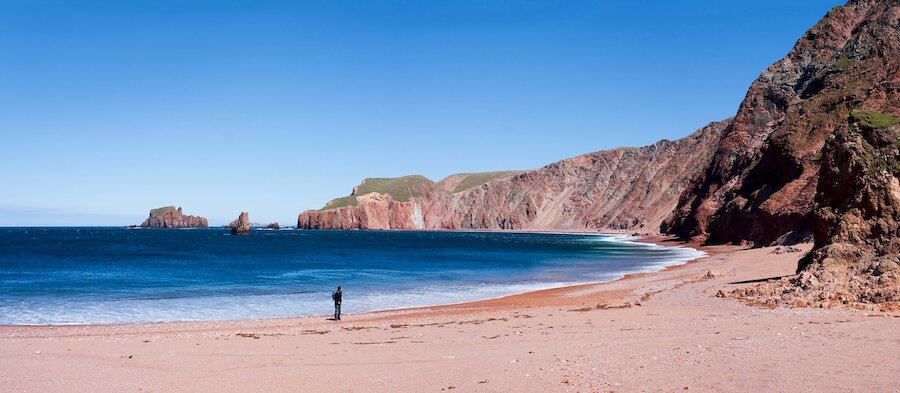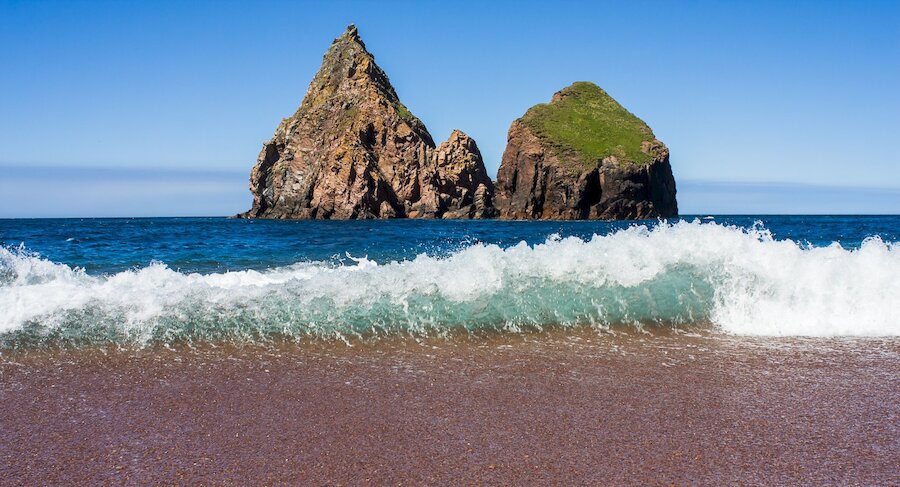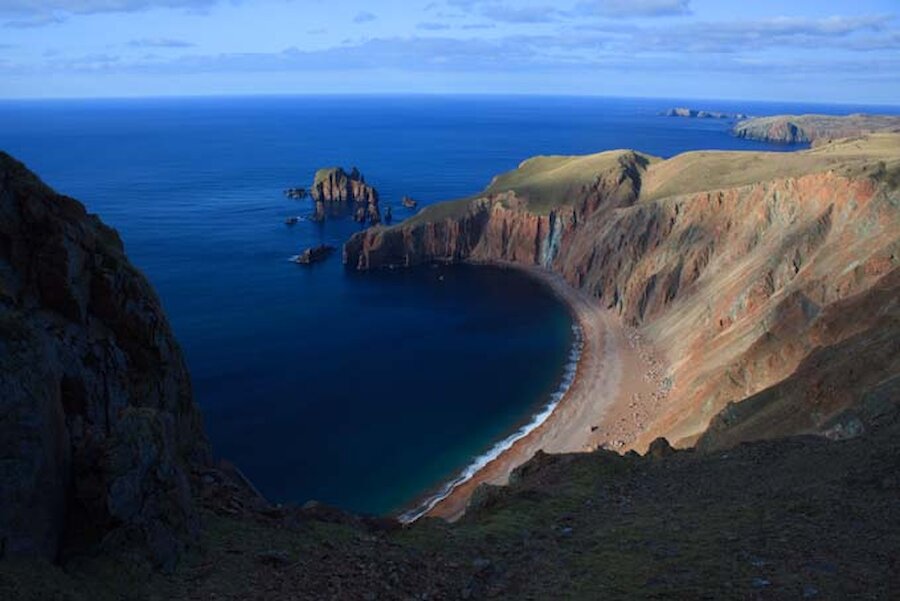Best Beaches? As you may be aware, there are many candidates in that highly competitive Best Beaches in the World category. Upstarts such as Bondi, Sandwood Bay, Copacabana, Nairn. Forget all that. The best beaches of the world are all in Shetland. The South Mainland has the golden fineness of Spiggie, Boddam and especially the stunning tombolo, or double-sided beach, at St Ninian’s Isle (which possesses flattened pebbles so wondrous I once considered selling them on eBay in packs of four, to aid meditation. Or skimming.). The East and West Ayres at Hillswick have their charms, but things get really interesting when you hit the red granite that gives the northern part of the North Mainland its various names: North Roe, Ronas Hill, Roer Water. Red, red, red. Hidden away beneath some of the fractured, cave-pocked cliffs of Eshaness lie gritty shingle strands, only reachable via dodgy scrambles down ever-shifting watercourses for which you should really bring ropes, helmets and years of experience. But, in my case, never do. Fear of the embarrassment which would be involved in calling out the local coastguard, every man and woman of which is a friend or neighbour, mean that you simply cannot get stuck, get hurt or go missing. It is Not Allowed.
The two best beaches in Shetland – or, let’s be fair, my favourites – and hence in the world, are the Lang Ayre ('Long Beach') and the small tombolo at Uyea Isle. The Lang Ayre can be reached only be sea or by a long walk either over the top of Ronas Hill, Shetland’s highest peak, or along its Specially Scientifically Interesting flank. Uyea Isle lies about six miles to the north of the Lang Ayre. Uyea itself is an old crofting township, now inhabited only during the lambing season but containing some of the most fertile land in Shetland. There’s a drivable track from North Roe, grant-aid widened in places to almost motorway dimensions. It corkscrews through the Beorgs of Uyea and past such wondrous Norse nomenclature as Heogel of the Moor and Moosa Breck. No Gaelic here. Uyea, when reached from this route, appears like a green mirage, truly magnificent, a kind of scoured Shangri-La with extra sleet.




